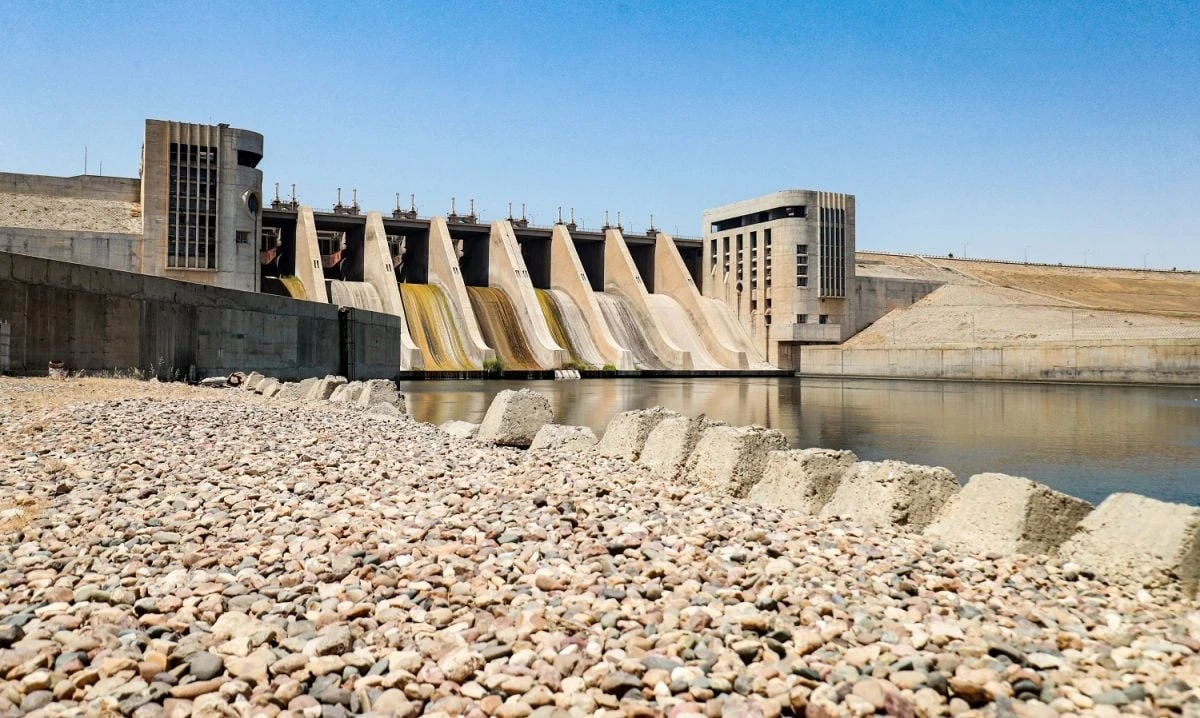Preserved or neglected? 2,300-year-old tomb on display in Bodrum supermarket
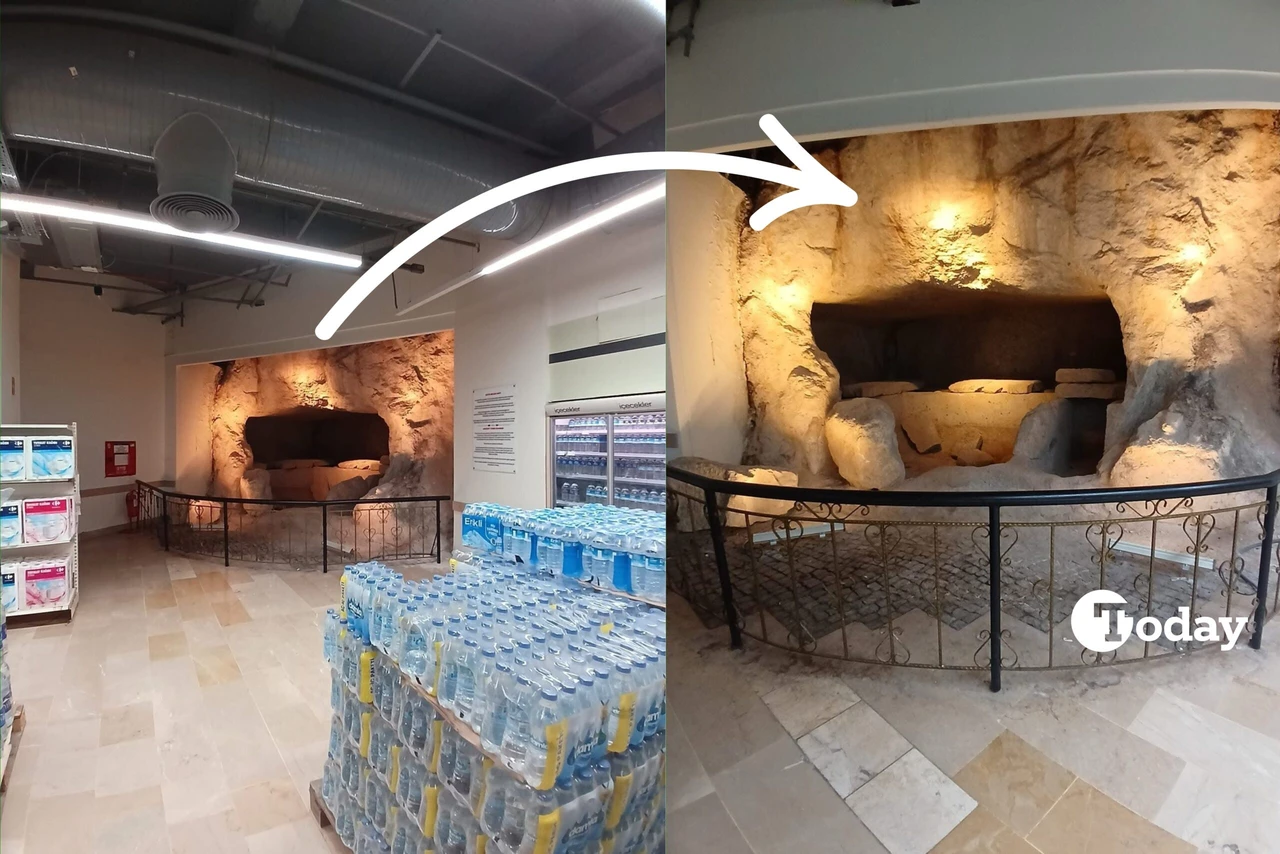 A 2,300-year-old rock-cut tomb, enclosed by barriers, is displayed inside a supermarket. (Photo collage by Koray Erdogan/Türkiye Today)
A 2,300-year-old rock-cut tomb, enclosed by barriers, is displayed inside a supermarket. (Photo collage by Koray Erdogan/Türkiye Today)
A 2,300-year-old rock-cut tomb, discovered during construction work at the entrance of Bodrum, Türkiye, has been controversially placed on display inside a supermarket. The ancient burial site, dating back to the third century B.C., is now situated among store aisles, enclosed by metal barriers.
The unusual placement of the archaeological relic led to the site being nicknamed the “Museum Market.”
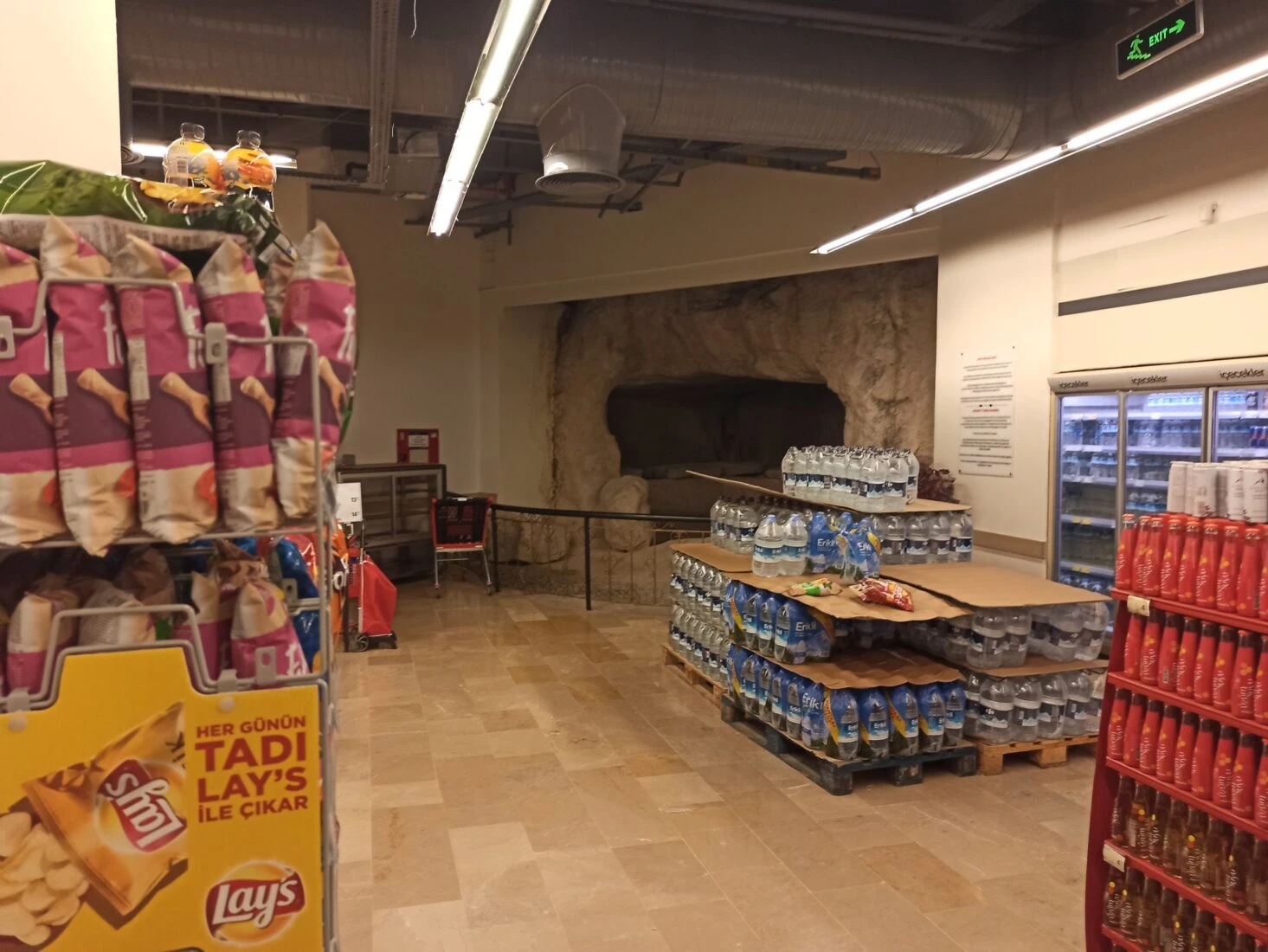
Rescue excavation conducted before market construction
Following the discovery of the tomb in the early 2000s, construction was halted, and a rescue excavation was carried out by the Bodrum Museum of Underwater Archaeology under the supervision of the Directorate of Monuments and Museums. The excavation, conducted with special permission from the Ministry of Culture, revealed that the tomb belonged to a family and contained six sarcophagi, human bones, and ceramic artifacts, including amphora fragments.
The site was officially registered by the Izmir Regional Board of Protection of Cultural Heritage No. II. However, after the market was completed, the tomb was integrated into the store’s interior instead of being relocated or protected in a museum.
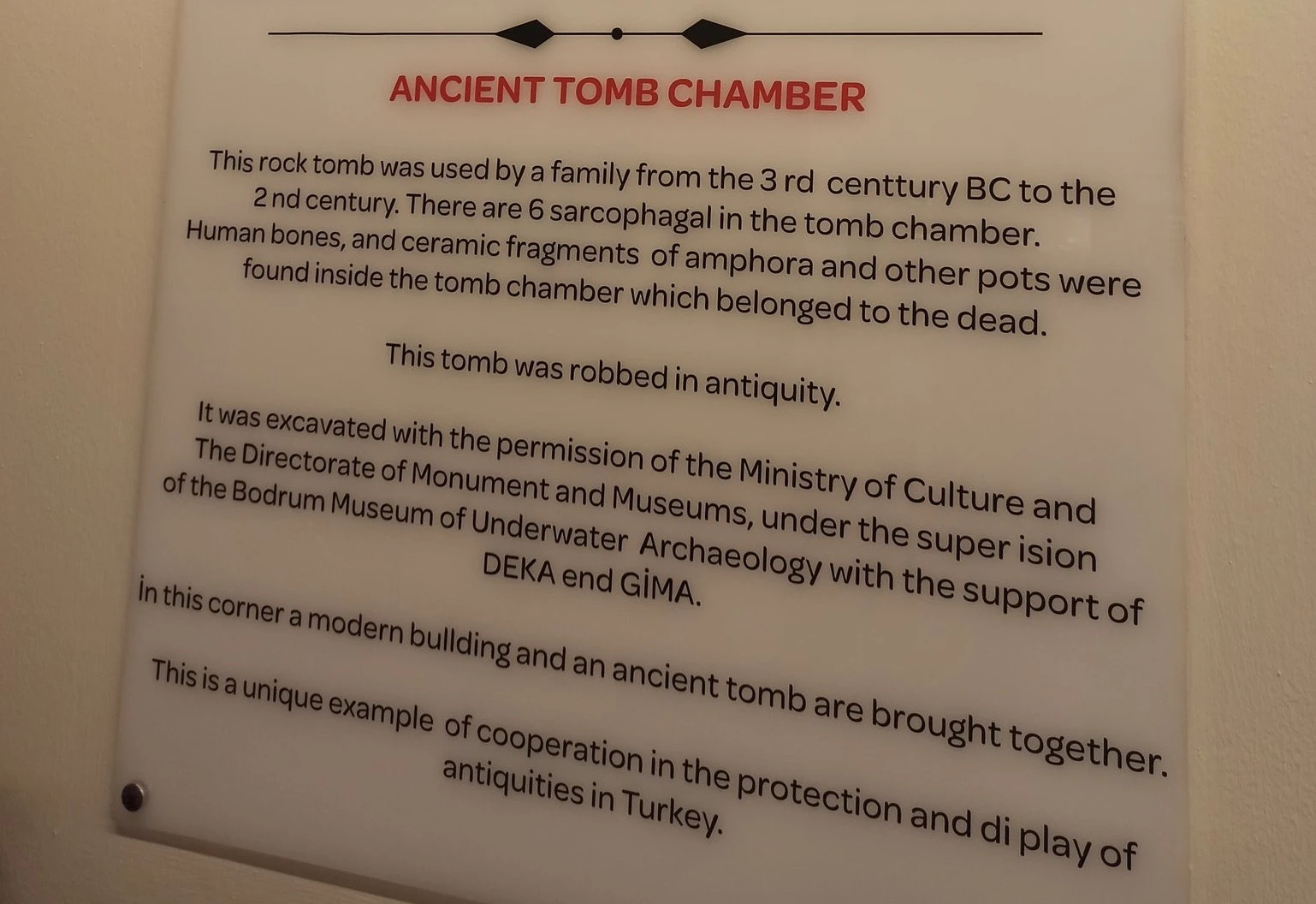
Tomb’s history highlighted in English information panel
An English-language panel placed near the tomb explains its historical significance. According to the description, the tomb was used between the third century B.C. and the second century A.D.
It also states that the burial site had been looted in antiquity and emphasizes its excavation was a “unique example of cooperation in the protection and display of antiquities in Türkiye.”
Public outcry over unusual exhibit
The controversy surrounding the tomb resurfaced in 2022 when architect Osman Gudu shared images of the site on social media, expressing disbelief and frustration. “How was this allowed?” he questioned, calling it an unacceptable fate for such an important historical site. Gudu described the situation as “unbelievable yet real,” criticizing the decision to leave the tomb inside the market rather than ensuring its preservation in a more suitable setting.
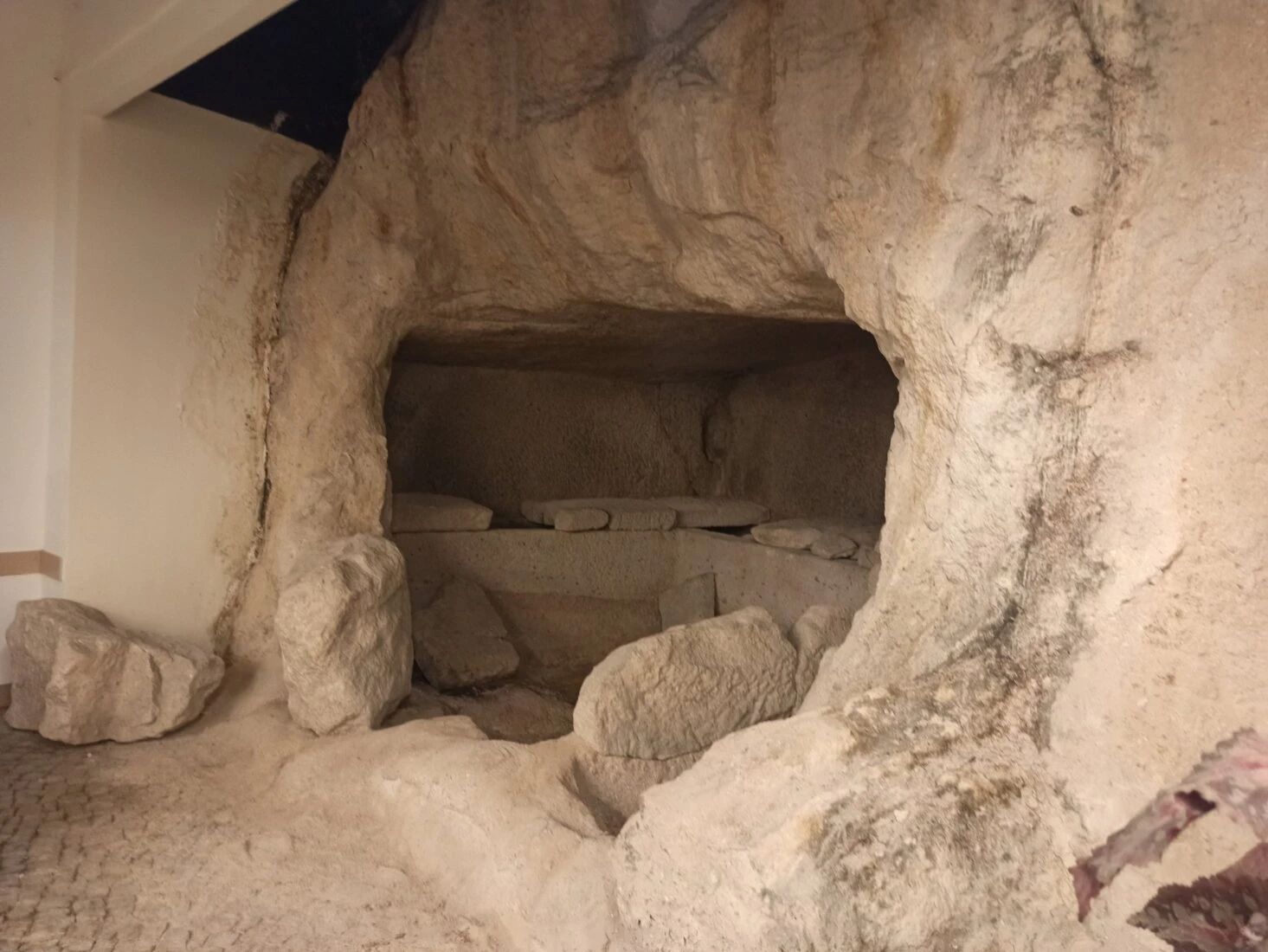
His post, featuring photos of the ancient tomb beside supermarket shelves, went viral, reigniting debates about Türkiye’s cultural heritage preservation policies. Many social media users echoed his concerns, calling for authorities to take immediate action to protect the site more appropriately.
A surreal juxtaposition of history and commerce
The placement of the tomb within a functioning supermarket continues to raise ethical and cultural concerns. While some argue that this approach allows easier public access to history, others see it as a neglectful commercialization of heritage.
The debate remains ongoing, with archaeologists, conservationists, and the public urging for a reassessment of the tomb’s future.



